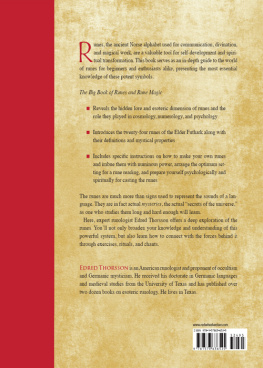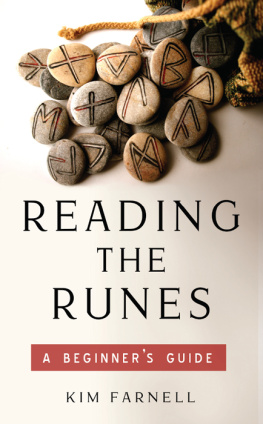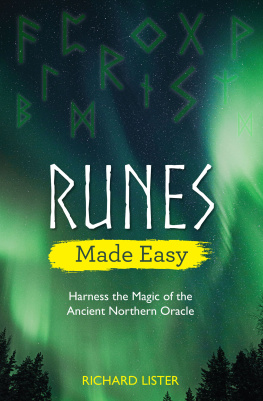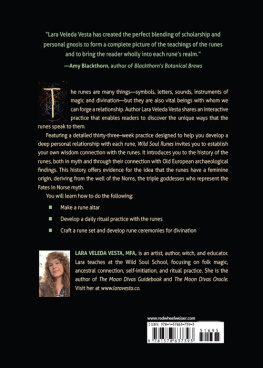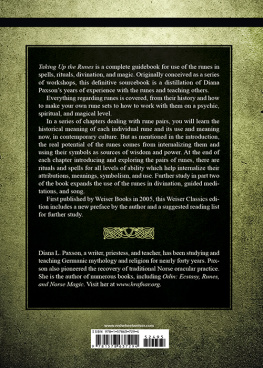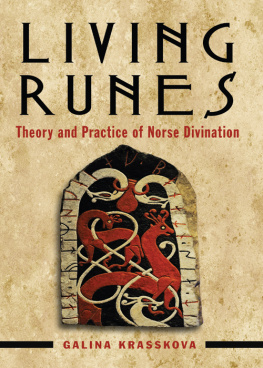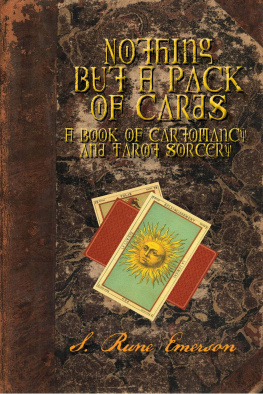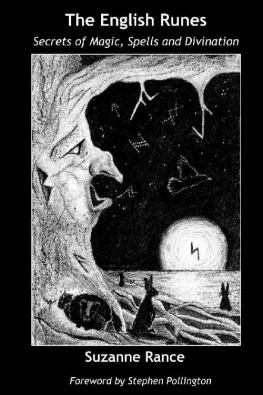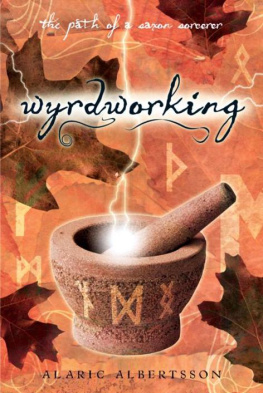
About the Author

Joan Stewart
Alaric Albertsson began his spiritual journey when he was introduced to the Anglo-Saxon gods and goddesses in 1971. Over the past four decades, his personal spiritual practice has developed as a synthesis of Anglo-Saxon tradition, country folklore, herbal studies, and rune lore. A native of Missouri and Arkansas, Alaric now resides in western Pennsylvania, where he is a founding member of Earendel Hearth, an Anglo-Saxon inhred . For more information, visit www.alaricalbertsson.com.
Copyright Information
A Handbook of Saxon Sorcery & Magic: Wyrdworking, Rune Craft, Divination & Wortcunning 2017 by Alaric Albertsson.
All rights reserved. No part of this book may be used or reproduced in any matter whatsoever, including Internet usage, without written permission from Llewellyn Publications, except in the form of brief quotations embodied in critical articles and reviews.
As the purchaser of this e-book, you are granted the non-exclusive, non-transferable right to access and read the text of this e-book on screen. The text may not be otherwise reproduced, transmitted, downloaded, or recorded on any other storage device in any form or by any means.
Any unauthorized usage of the text without express written permission of the publisher is a violation of the authors copyright and is illegal and punishable by law.
First e-book edition 2018
E-book ISBN: 9780738753584
Previously published in 2011 as Wyrdworking: The Path of a Saxon Sorcerer
Cover design by Kevin R. Brown
Editing by Nicole Edman
Interior illustrations by Llewellyn art department
Llewellyn Publications is an imprint of Llewellyn Worldwide Ltd.
Library of Congress Cataloging-in-Publication Data
Albertsson, Alaric.
A Handbook of Saxon Sorcery & Magic / by Alaric Albertsson.
1st ed.
p. cm.
Includes bibliographical references and index.
ISBN 978-0-7387-5338-6
1. Magic, Anglo-Saxon. 2. Druids and druidism. I. Title.
BF1622.A53A43 2011
133.43dc22
2010026992
Llewellyn Publications does not participate in, endorse, or have any authority or responsibility concerning private business arrangements between our authors and the public.
Any Internet references contained in this work are current at publication time, but the publisher cannot guarantee that a specific reference will continue or be maintained. Please refer to the publishers website for links to current author websites.
Llewellyn Publications
Llewellyn Worldwide Ltd.
2143 Wooddale Drive
Woodbury, MN 55125
www.llewellyn.com
Manufactured in the United States of America

Llewellyn Publications
Woodbury, Minnesota
Acknowledgments
A book is much like a ship in that it requires more than the person at the helm if it is to reach its destination. Others are needed to row and help with the sails if the book is to carry its cargo of information successfully to its destination, the reader. So many people have contributed to A Handbook of Saxon Sorcery & Magic in one way or another that I do not even know how to begin to thank everyone.
Christopher Penczak has consistently supported my writing, and neither this book nor the preceding one would have come about were it not for his encouragement. I have to thank my acquisition editor, Elysia Gallo, who has helped give the book a more polished tone. Kevin R. Brown has once again created a striking and beautiful book cover. Bryan Chicks suggestions have shaped the style of the book; he reminded me that A Handbook of Saxon Sorcery & Magic will be, for most readers, a textbook on magic rather than an abstract study of the subject. Taren Martin kept me focused on the rune chapters. I want to thank Barbara Criswell, of Aquarius Books in Kansas City, whose support and belief in my work helps me keep believing in myself. Of course I need to thank those who contributed so generously to the content of this book, including but not limited to Jesse Garrison, Tina-Lisa Agresta, West Hardin, Deana Isendun, and Maria Stoy. I am grateful for the support and encouragement of ADF druid friends, such as the Reverend Kirk Thomas, Diane Emerald Bronowicz, Robb Lewis, and others. Judy DeRousse corrected endless grammatical errors for me and helped polish the manuscript with a smoother writing style. Perhaps more than anyone else, though, I need to thank Scott, who not only inspires me, but who also put up with my long absences and distraction as I crafted this book.
Finally, I want to thank Benjamin Brown, who left our Middle Earth twenty years ago. Although he is gone, he is never forgotten, for he helped shape and guide me in ways that I did not fully appreciate then, but so deeply appreciate now. It is to him, a great sorcerer, that A Handbook of Saxon Sorcery & Magic is dedicated.
Contents
Getting Started
Runes and Rncrft
c sc Thorn oh Beorc Eolh
Feoh Ur Eh Ior
Gear Hagol Is Sigel Tir Lagu Dg
Mann Wynn Ethel Cen Gyfu Peorth
N ed R d Yr Ing Os Ear
Calc Gr Cweorth Stn
More Magic Techniques
: The RunesTheir Names, Meanings, and Phonetic Values
: WyrdstonesTheir Names and Meanings
: How to Write with Runes
Introduction
In my book Travels Through Middle Earth: The Path of a Saxon Pagan , I presented no more than a cursory look at magic. As I stated in my introduction then, Spells and runes and charms have their place, of course, but this [book] is not that place.
Now, here in this new introduction, I can say that this book is the place to find the magic of Saxon sorcery.
Within these pages you will learn how to craft rune charms, brew potions, and cast effective spells. You will learn magical techniques to find love and prosperity. Whether you are merely curious, or if you seek to fully accept the responsibilities of a Saxon dr mann (druid), you will find a wealth of useful information here. A Handbook of Saxon Sorcery & Magic is a culmination of my own forty years experience with magic. For me, magic is intriguing and fairly easy to master as a skill. Let me emphasize that this does not mean I am better or more enlightened than a Saxon Pagan who has no interest in the subject. In fact, there are days when I wish that I could trade magic in for a more dependable skill, like carpentry or perhaps tailoring. Unfortunately, I am hopeless with a hammer and sewing machines baffle me. If magic does not come naturally to you, rest assured that there is no reason you need to pursue these arts. There are many ways in which each of us can contribute to our continually evolving contemporary Pagan culture, and magic is just one possibilityjust one potential path along your own journey through Middle Earth.
If you do have an interest in pursuing the arcane arts, then read on! We will begin this particular journey by defining precisely what we mean by magic , and by defining its nature. I feel that this is essential to any intelligent discussion of the subject. Modern English often has a fluid vocabulary, allowing me to say one thing and you to hear something entirely different. Take the word love , for example. You can love your husband or wife, and you can love beagles, yet these are (hopefully) two completely different kinds of love. The word magic is equally mutable. Some people use it for rituals and exercises intended solely to promote personal transformation. But this book is not about personal growth (which was addressed in Travels Through Middle Earth ); this book will move past the fundamentals of personal growth and spirituality to explore old-fashioned, cauldron-stirring, spellcasting wiccecrft .


